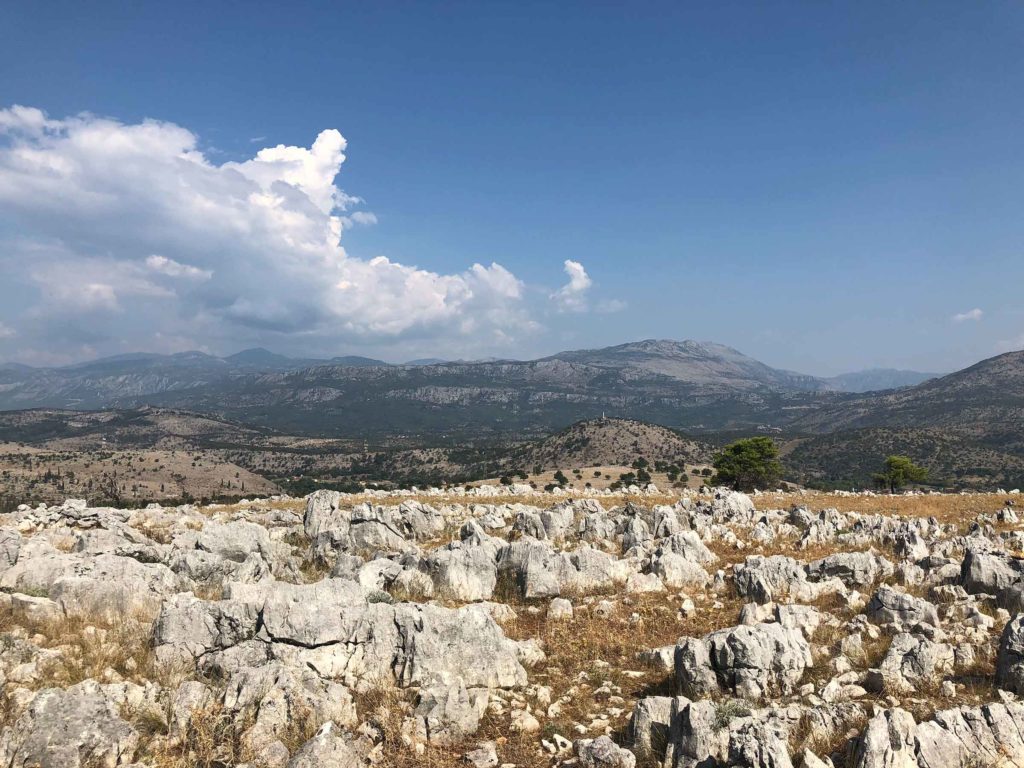
My excitement level was at a 10. I was boarding my Montenegro Airlines flight to Podgorica, a city I love, and I was soon to be reunited with Mladen and Kokolo, two awesome guys I met on my previous stay at Montenegro Hostel. I reached my row in the plane and my heart sank. In my haste, I accidentally booked the window seat; my long legs can barely tolerate an aisle seat, let alone being crushed into a curled-up ball in the window position. I knew I was going to feel every minute of this short journey through the sky.

But there was a pleasant surprise in store for me after all…
Montenegro (Crna Gore in Montenegrin) means “black mountain,” and the country is justifiably famous for its stunning topography. I was given stunning, bird’s-eye views of the countryside and my error of selecting a window seat now felt like a serendipitous treat.
Many travelers understandably come to Montenegro to enjoy all the natural wonders that the country has to offer, but there is a common misconception about the great outdoors here as well. The great lie you will hear oft repeated is that you must leave Podgorica if you want to find any green spaces or experience any good hiking. This is an untruth and needs to be called out. In this post, I will highlight three hikes in and around capital, listed from easiest to hardest, that make for good ways to get some fresh air without straying too far from the cultural and historical joys that Podgorica has to offer.
Ljubović
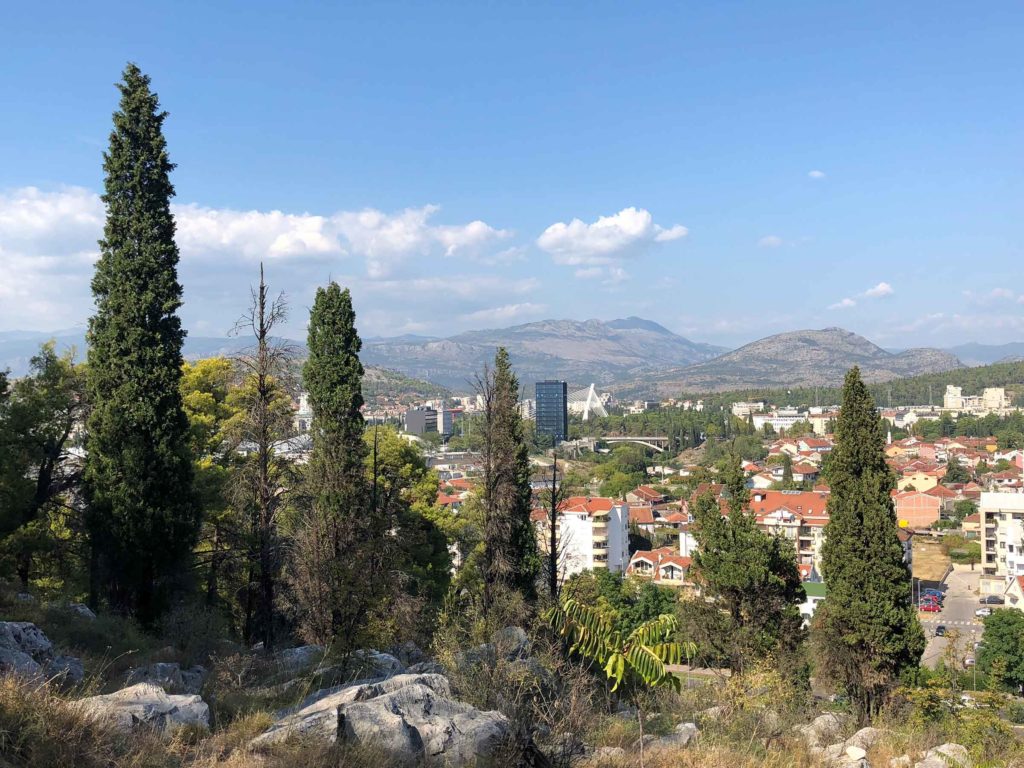
Ljubović is the smallest of Podgorica’s encircling hills, rising 101m (331ft) to the south of the city. There is a paved road that you can follow to the top, although it also possible to simple climb up the side of the hill as I did, following the lead of several other hikers. Note that the Chinese Embassy is on the far side of Ljubović, and if you make a wrong turn, you’ll quickly be shooed away by Chinese guards.
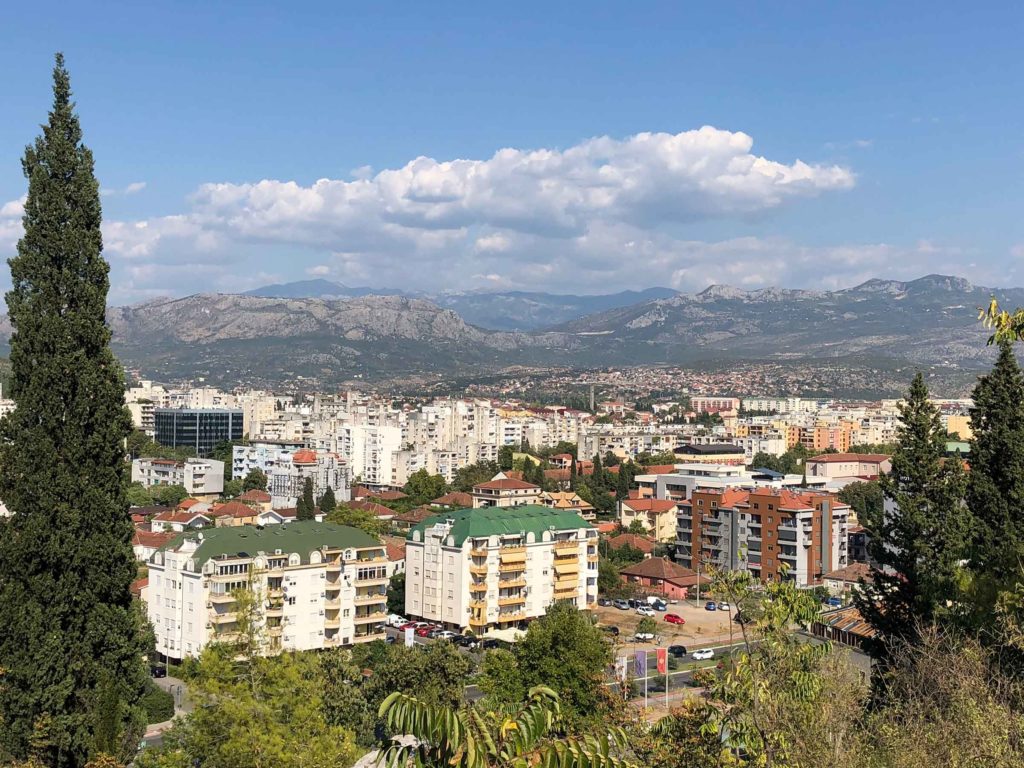
If you do take the paved road to the top, you’ll pass by the Seismological Observatory, an unfortunate reminder that earthquakes have caused much harm to the region. Montenegro’s worst earthquake hit on April 15, 1979, measuring 6.9 on the Richter scale and sending over 90 shockwaves throughout the country (and beyond) in its wake. Many coastal cities suffered severe damage; Podgorica did not escape unscathed either and the aftershocks were felt as far as Ljubljana, Zagreb, Belgrade, Sarajevo, Prishtina and Skopje. The observatory is a reminder that Montenegro’s mountainous beauty comes at a price.
Gorica
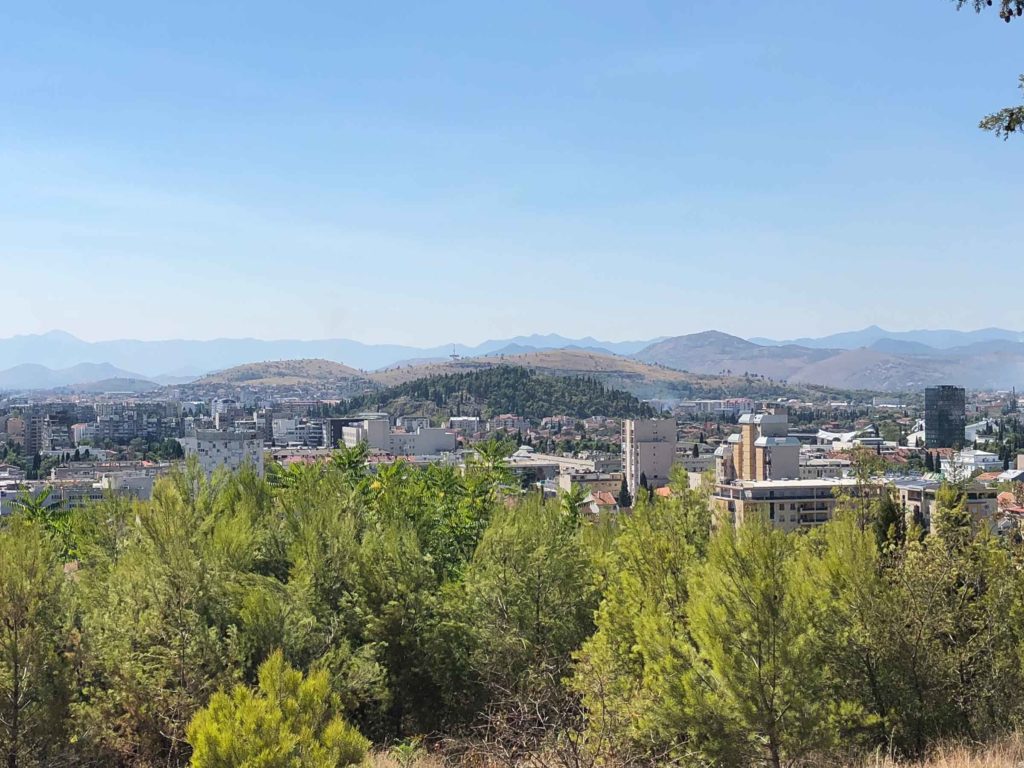
The pronunciation of “Podgorica” seems to leave some flummoxed (my father has had some very interesting interpretations of the word), but maybe if you have a little context behind the name, it won’t be so tricky. “Pod” means below or under and “Gorica” (gor-itsa; rhymes with pizza) is the name of the northerly hill under which the city was built. Podgorica literally means “under Gorica [hill].”
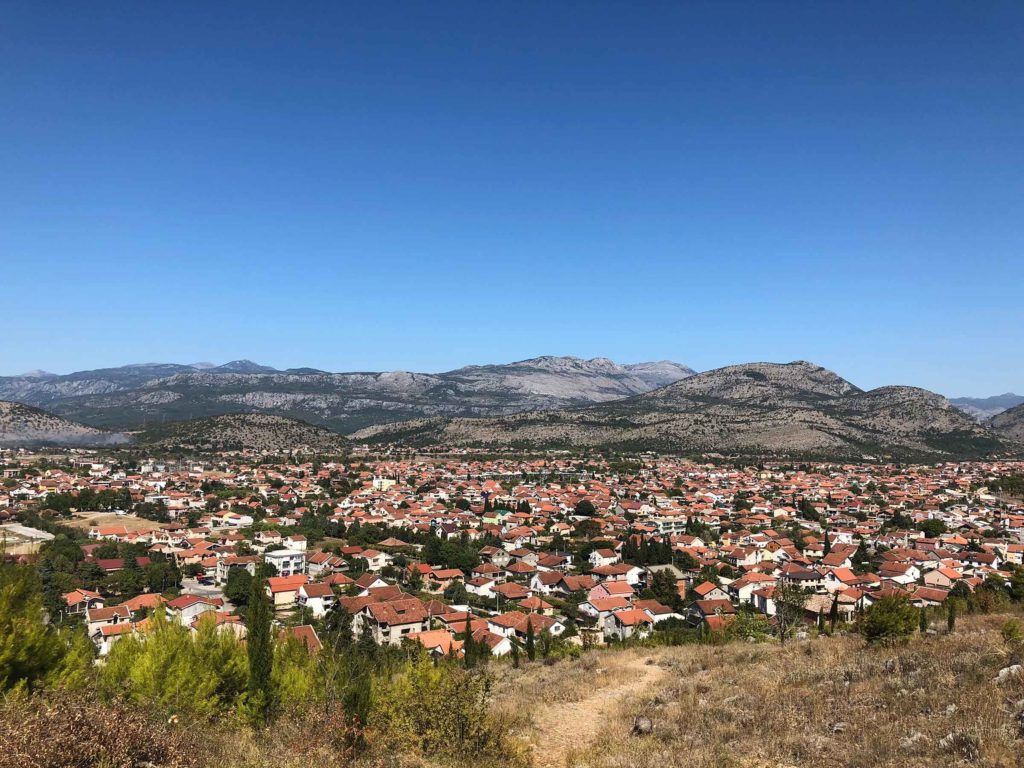
Gorica’s nickname is “Podgorica’s Lung” and it’s easy to see why. The green oasis offers shady biking and running paths, tennis courts, an adventure park and several cafes where you can enjoy an espresso or a Montenegrin beer. A walking path completely encircles the 130m (427ft) hill, allowing you to take great photos from all angles of the city.
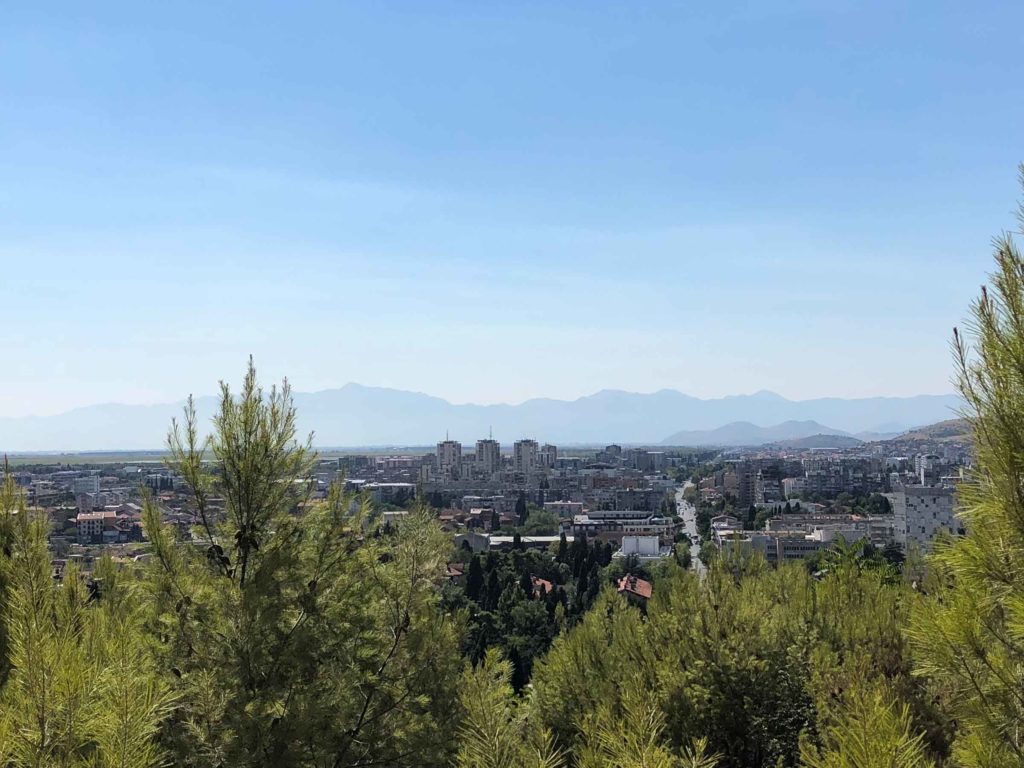
There are two main historic sites on Gorica. The first is Crkva Svetog Đorđa (St. George’s Church), Podgorica’s oldest church and the second is the Spomenik Partizanu Borcu (Partisan Fighter’s Monument), which I will discuss in the following post. Locals flock to the trails on the weekends; if you’re looking for peace and quiet, a visit during the week would be better.
Hiking to Duklja (Doclea)
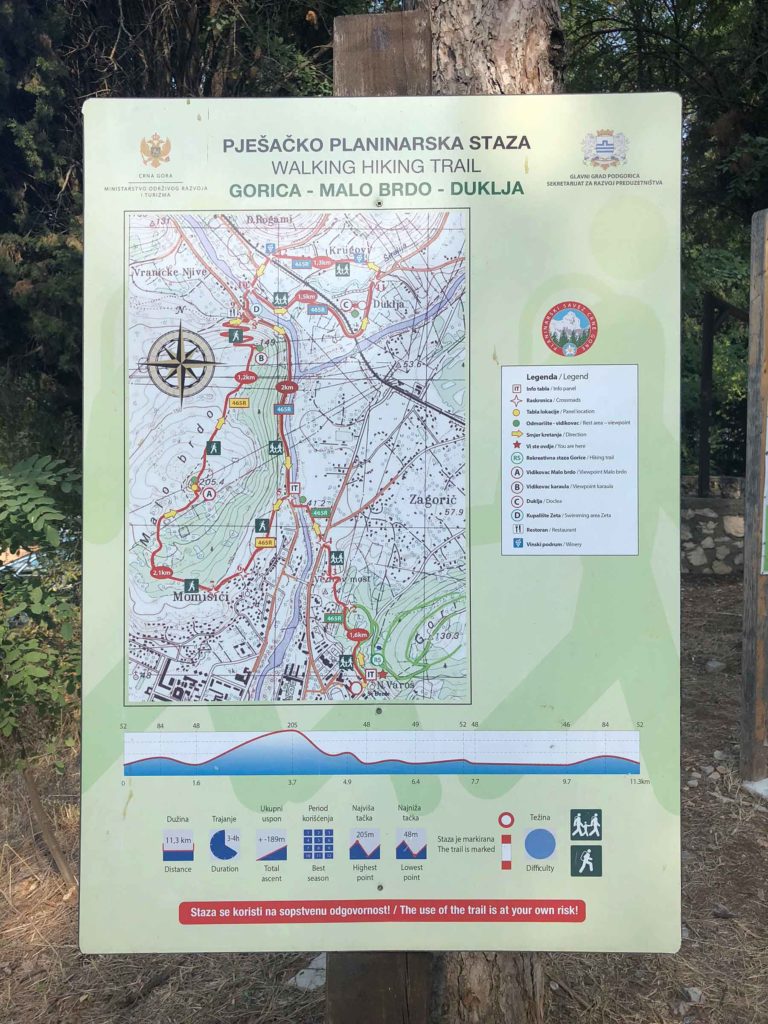
This final hike, to the ancient Roman city of Duklja (5km outside of Podgorica), is the most strenuous on the list and will take an entire day to trek there and back again. Taking a photo of the above map was a real lifesaver. The trail does not appear on google maps, and although it is marked along the way with red and white bullseyes, sometimes they are far and few between; you could easily veer off course. This is not a very well-trod footpath and one section in particular is quite steep. As noted: the use of the trail is at your own risk!

The hike begins at the ridiculously crystal-clear Morača River, whose blues and greens seem like they would be more at home in Hawaii or Bali than Podgorica. I should also mention that I didn’t make this journey alone; a German traveler I met in the hostel was also interested in checking out Duklja and it was nice to have a companion for the day.
Sometimes people mistakenly conflate a “solo traveler” with “anti-social weirdo,” which couldn’t be any further from the truth. I don’t travel solo because I hate people. It’s actually the opposite. Aside from all the freedoms you have regarding your itinerary and what you want to do each day, solo travel allows you to meet new people and not rely on the people you already know to provide companionship along the way. Going solo forces you to be social and step out of your comfort zone. Would I have bonded with Igor, Edem, Robert, Kokolo, Mladen, Bojana, Elman, Richmond, Armen, Makara, Zviadi, Yusuf, Reine and so many others around the world if I had been traveling with friends? I guarantee you, I would not.
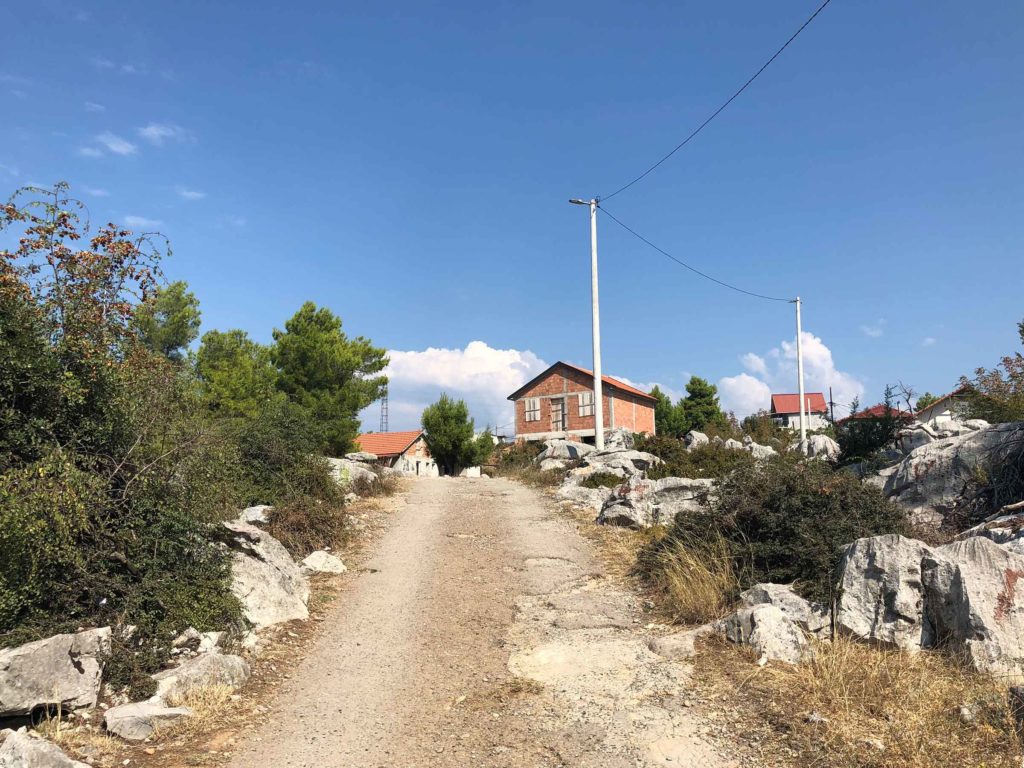
The first part of the trail winds up to Malo brdo’s top ridge and doesn’t seem to be marked at all. There were several moments when my new-found friend and I were sure we were going the wrong way, but we followed the map as best we could and as we neared the crest of the hill, we started seeing the bullseyes again.

Malo brdo is the tallest of Podgorica’s hills at 205m (674ft) and offers a hazy view of the city below. Atmospheric pomegranate trees decorate people’s yards along the way and we were even offered a few by some gregarious Montenegrins who wished us luck on our hike. People are friendly and welcoming throughout the Balkans (their hospitality is legendary for a reason), but Podgorica sees few tourists and locals will go the extra mile to say hi and find out where you’re from.

The hiking route offers little shade and it’s imperative that you bring enough water before starting out. We departed the hostel right after breakfast and the temperature still got the best of us by the time we reached the top of Malo brdo.
The next portion of the hike is the most jaw-dropping. I’m going to let my photos do the talking, but if anyone ever tells you that Podgorica isn’t beautiful, then pull up this post and use these pictures as exhibits A, B, C & D for proof that they have no idea what they’re talking about.
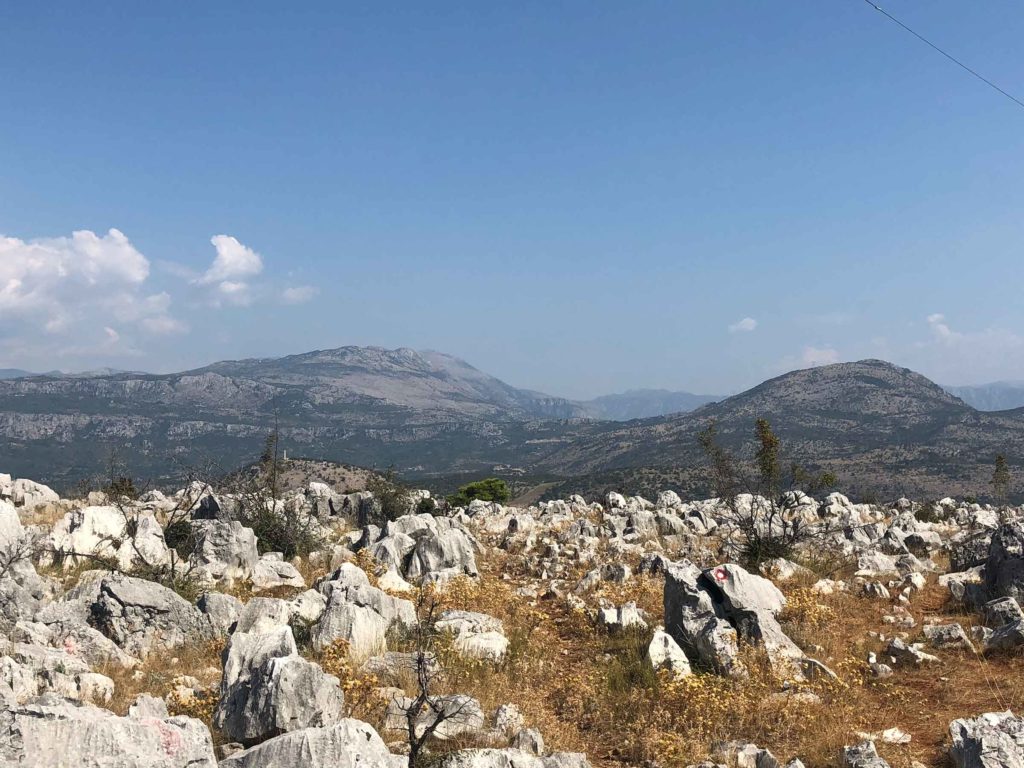

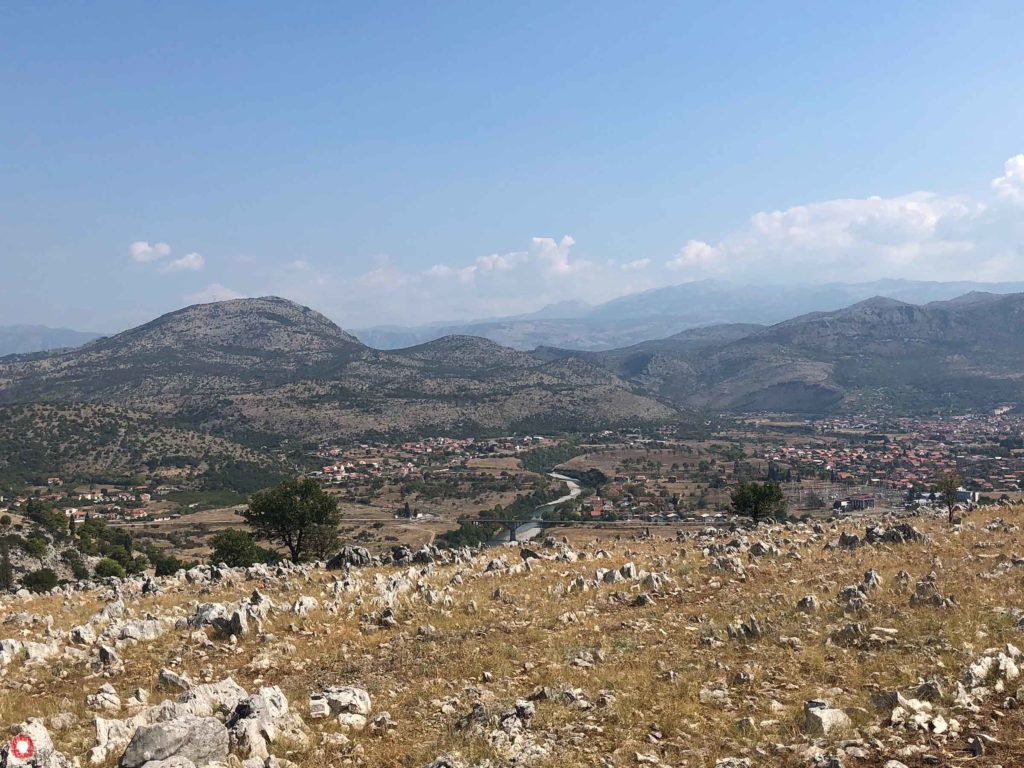

Making our way down the back side of Malo brdo was the toughest part of the hike. The hill is extremely steep and it’s easy to loose your footing. If you fall, you fall. And I did. Twice.

Next up, we crossed the equally entrancing Zeta River and from here it was smooth sailing to Duklja. Long before Podgorica was a thought in anyone’s mind, the Romans established the city of Duklja (Doclea in Latin) just northeast of where the future Montenegrin capital would lie.
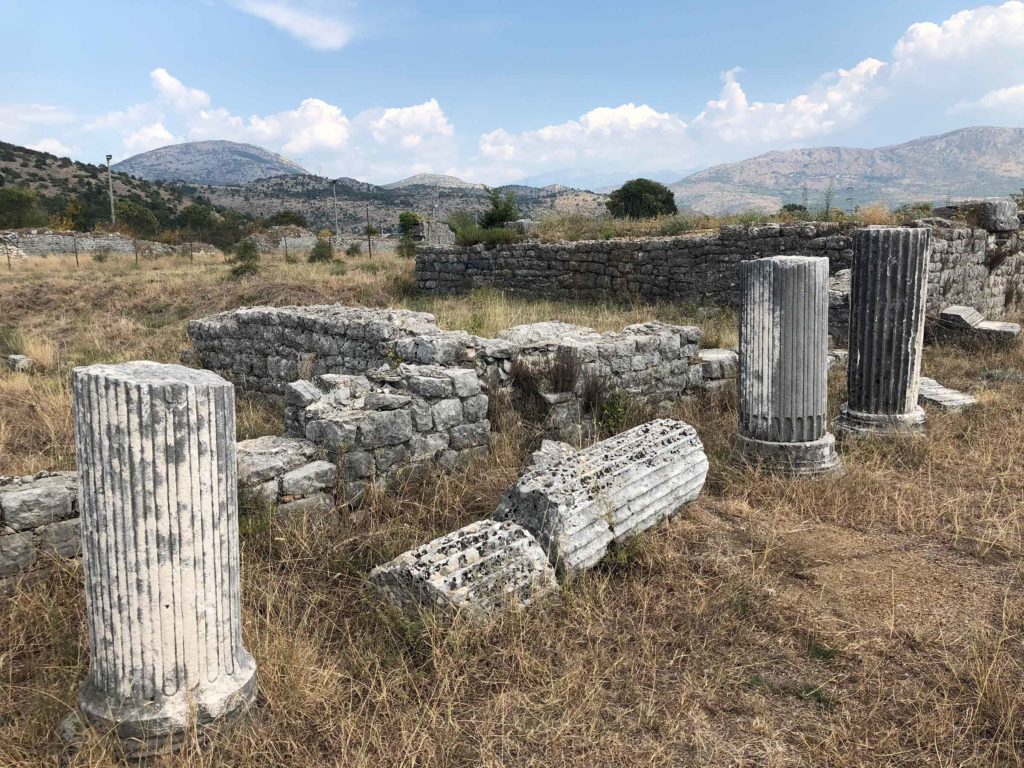
The first records of Duklja date from 90 AD and the metropolis was believed to house 8,000-10,000 people. The city flourished until the 5th Century when it suffered defeat at the hands of the Visigoths; one of Montenegrin’s notorious earthquakes capped off the destruction in 518. Afterwards, Slavs took over the land and became the direct descendants of the present-day Montenegrins.
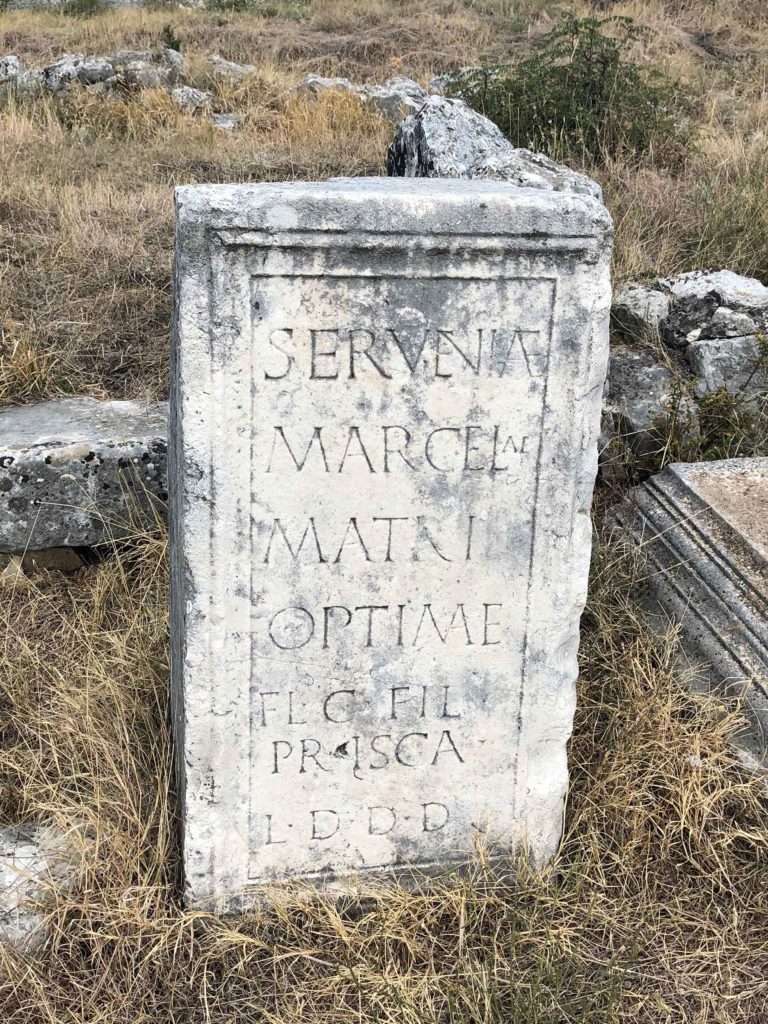
Today the ruins are run by the Muzeji i Galerije Podgorice (Museums and Galleries of Podgorica) and it was shocking to both of us that we only had to share the archeological park with two other visitors. This would be a major tourist attraction in any other city, but Podgorica’s low-key profile allows you to see Roman ruins up close and personal without being molested by crowds and the selfie-stick brigade.
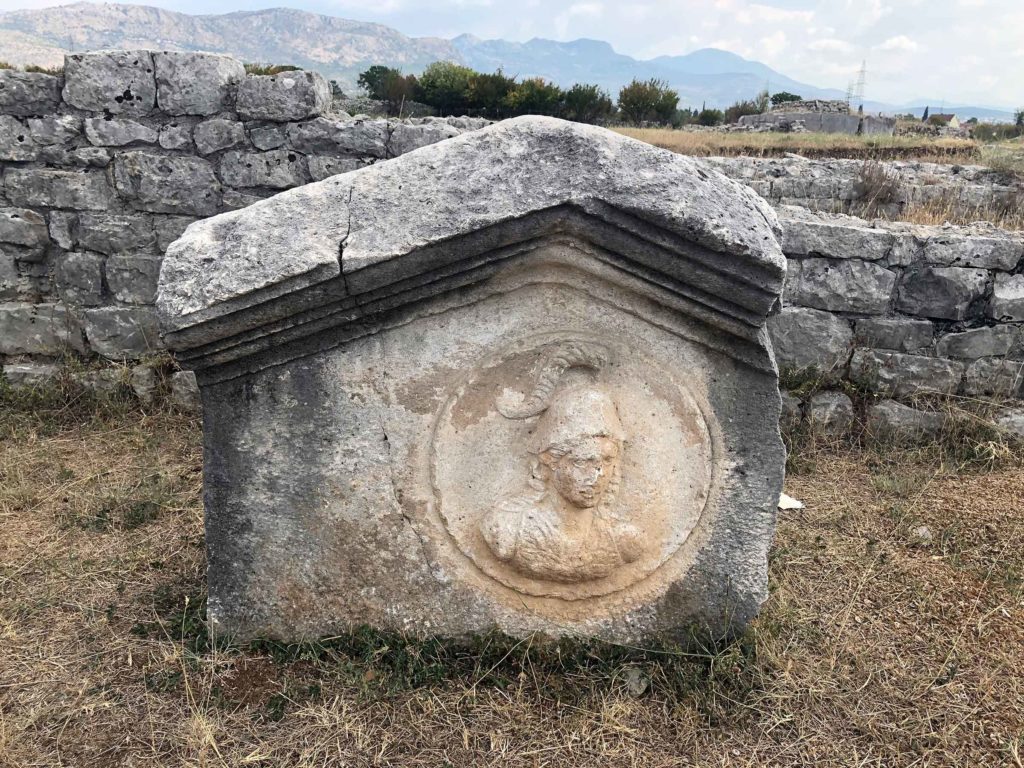
The ruins are free to tour and signs let you know when you’re passing the Forum, Temple of Diana, Basilica, etc. While no structures stand fully intact, there are some brilliant decorative cravings and embellishments to enjoy.
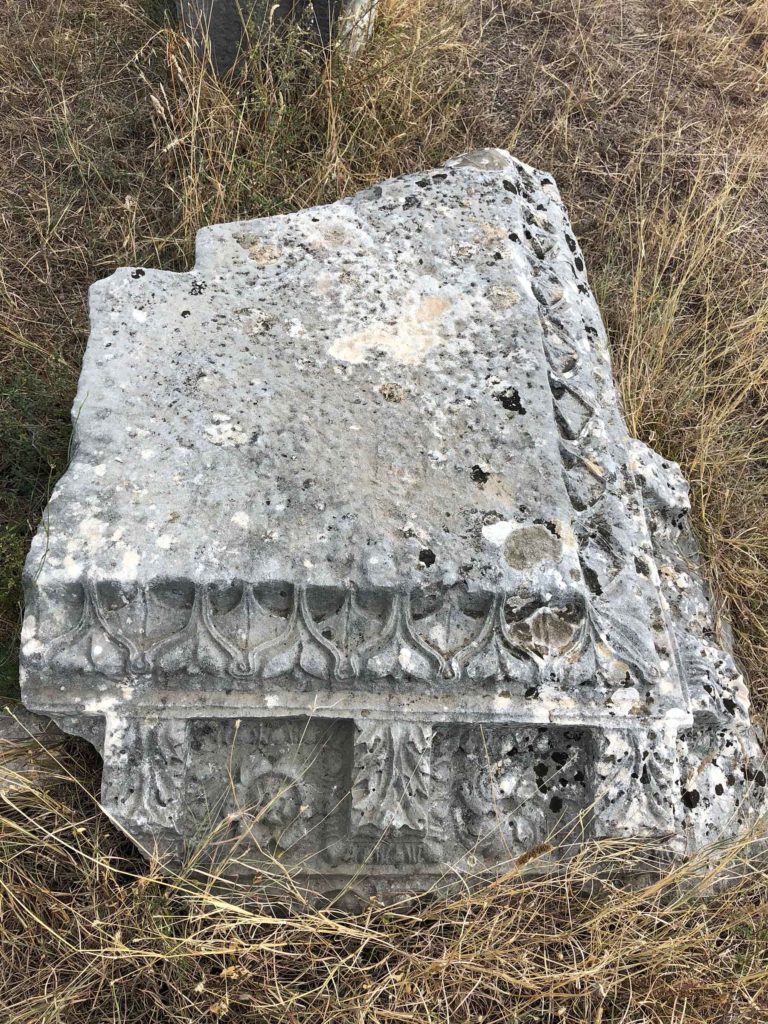
We leisurely ambled among the ruins and plopped down right in the grass when we were ready to enjoy some sandwiches and snacks we wisely brought from the hostel. You could probably drive out to Duklja in about 15-20 minutes, but we both felt the hike was much more rewarding. So many people that do give Podgorica a chance only budget one full day to take in the city. There’s no way you can squeeze all the museums, sights and green spaces into a single day. Not rushing this experience really allowed me to enjoy it and I’m glad I didn’t shortchange myself on taking in the scenery and making a new friend.
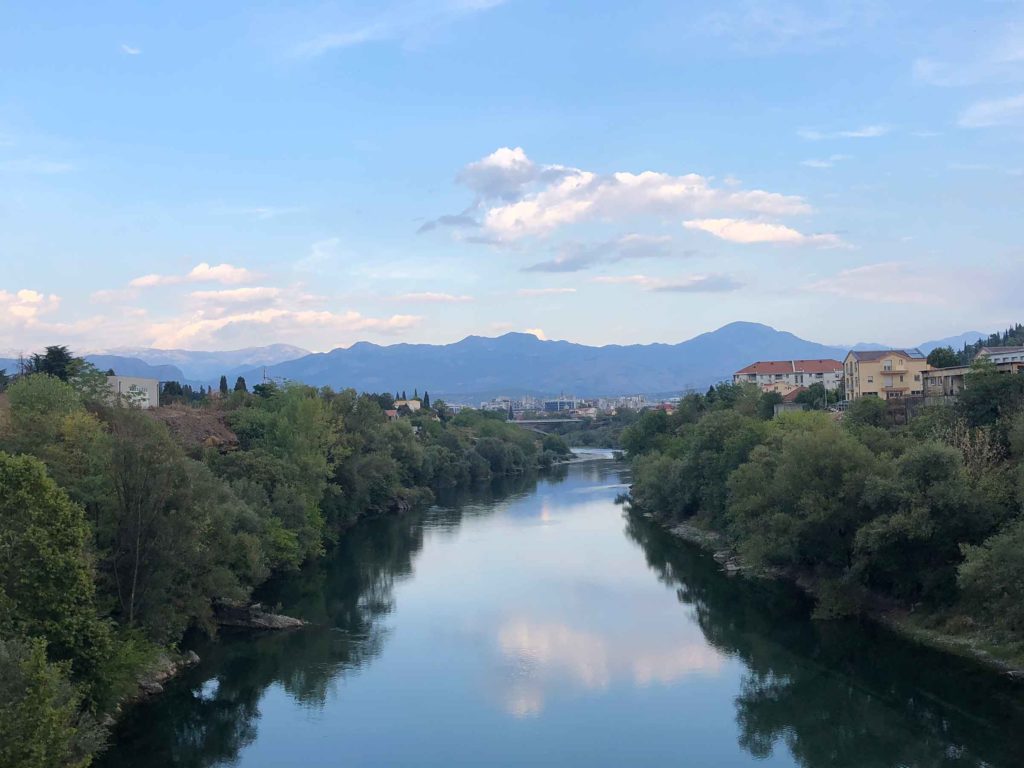
The return route took us home across a different bridge over the Morača River and the impending sunset cast a periwinkle haze over the mountains and riverbanks. A calm serenity fell over us as we moseyed silently back to the hostel. Every so often you have a perfect day while traveling and this was one for me. I could try to duplicate it a hundred times and I know it would never be the same. I had calibrated my mind to the frequency of the city and for a moment we were one.
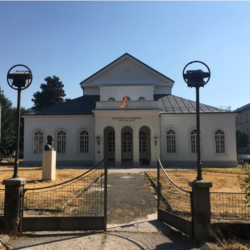
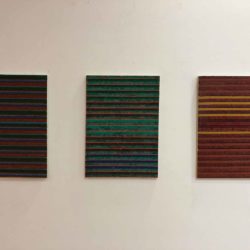
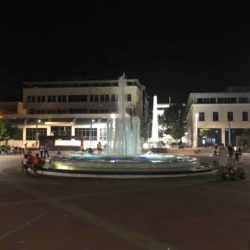
Wow!!! Cela nous excite à visiter nous même !!!
Merci, Edem! C’était mon objectif!